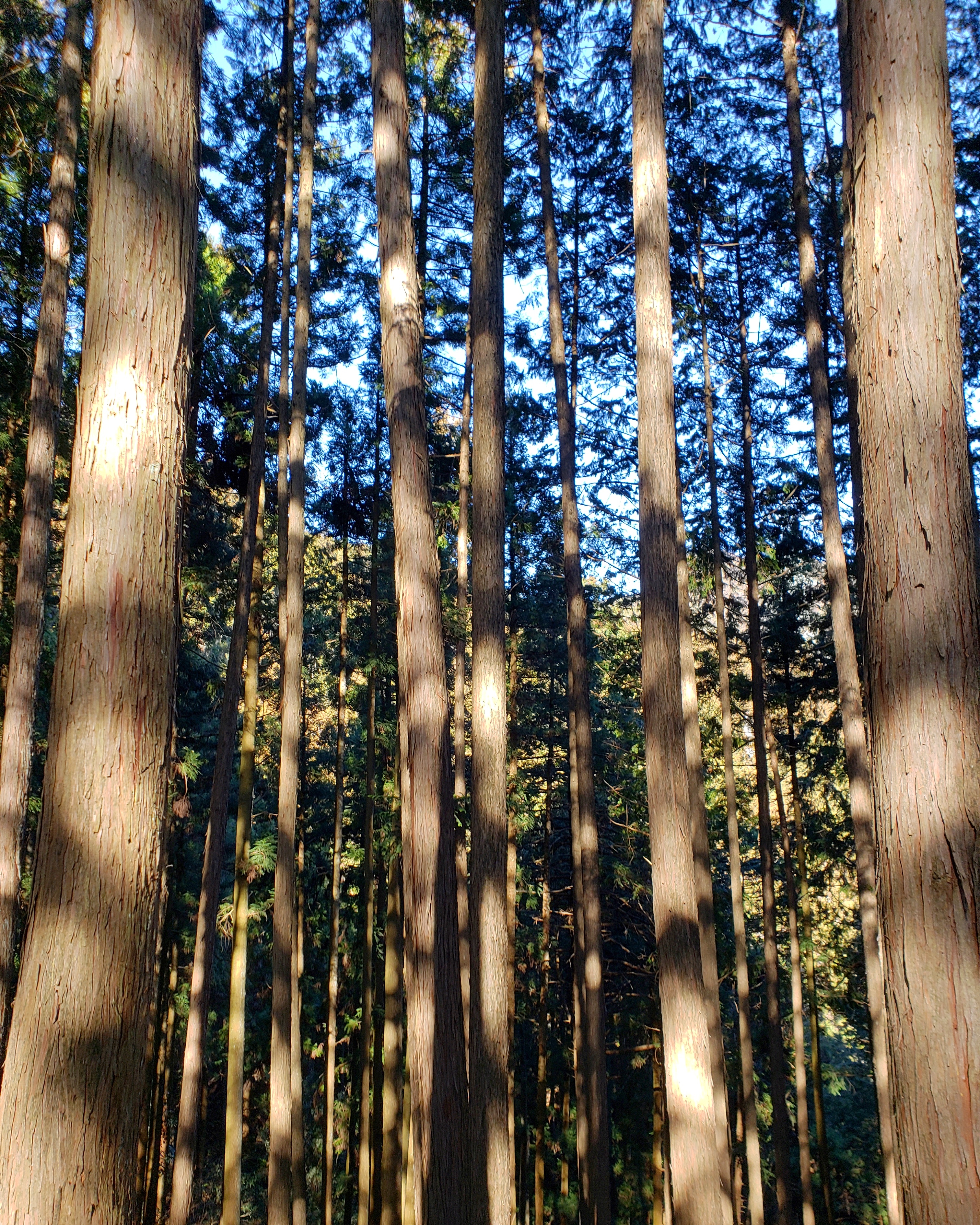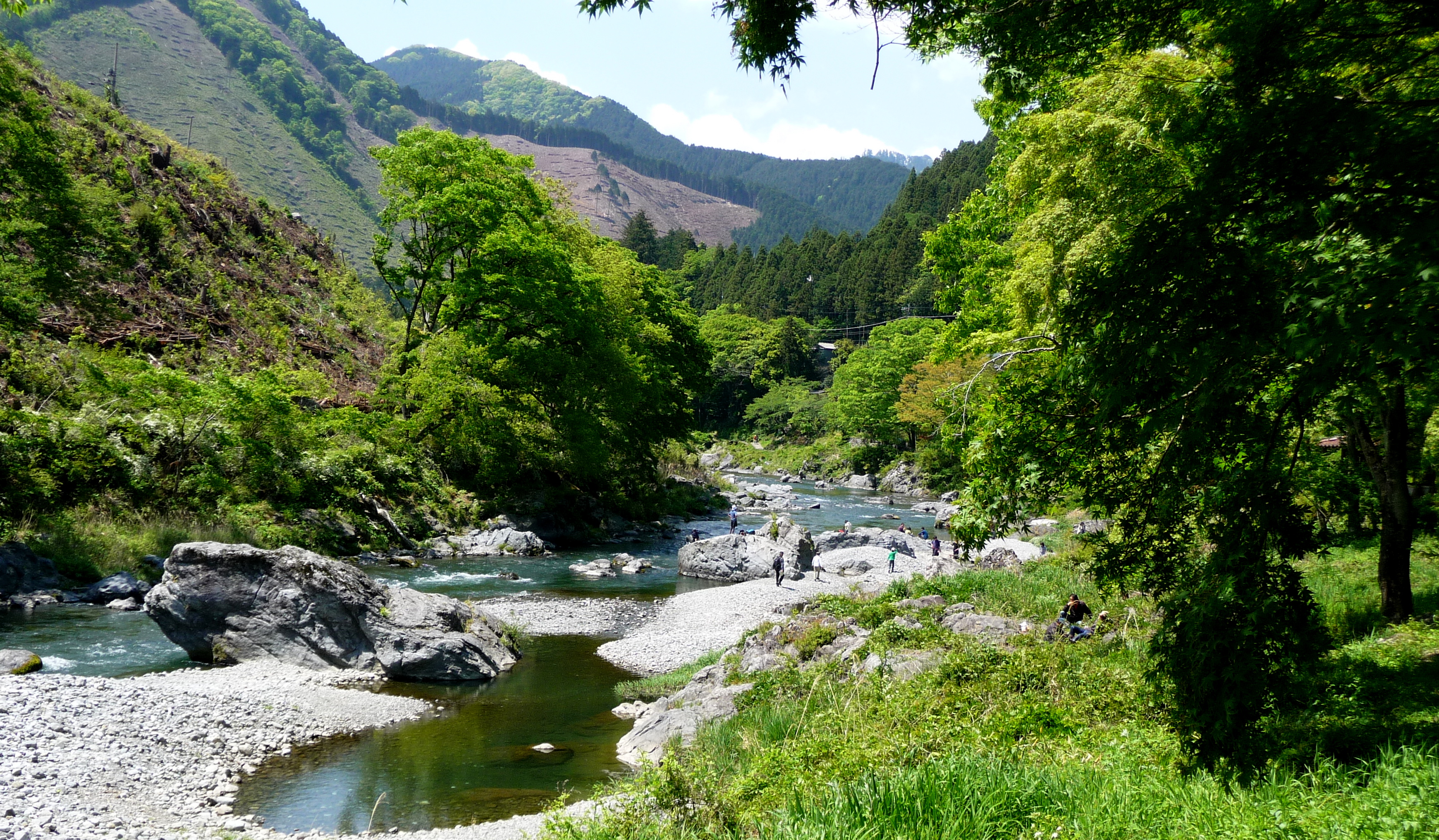Ome is a peaceful, rural, slow-paced city that contrasts sharply with Tokyo's modern lifestyle. Here, you'll find the nostalgia of hand-drawn movie posters, the serenity of Zen monasteries without tourists, and the warmth of the locals. Near Ome, there's also a beautiful tourist destination that can't be missed: Mount Mitake, with its majestic nature and incredibly fresh air.
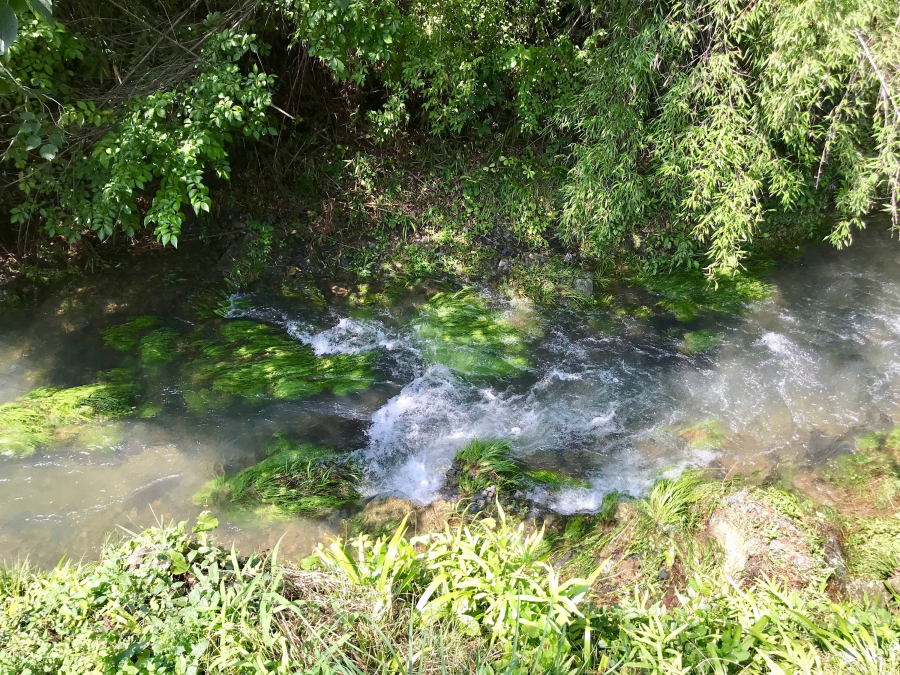
Come visit your friend, enjoy tea and look at paintings
On my first visit to Japan, I was fortunate to contact an old friend named Aki Norton, who is currently living in Ome City with her American husband named Cole Norton. Their small, two-story house reminded me of the house of Nobita and Doraemon. They welcomed me very warmly and let me experience authentic Japanese rural life.


I was served organically grown vegetables by my brother and sister-in-law. Breakfast usually consisted of a bowl of rice, miso soup, and a side dish.natto, which is fermented soybeans. I still remember the nervous feeling of my brother and sister when I tried natto for the first time, because not all foreign guests can stand the strange taste of natto. Being used to trying strange dishes, I found natto not difficult to eat and even tasted a bit like chocolate. And every meal must end with a cup of green tea made from pure matcha.
What’s more amazing is that both Aki and Cole are art lovers. Aki studied philosophy and art studies, while Cole is a watercolor artist. Although he is American, Cole is passionate about Eastern culture and is eager to learn traditional Chinese and Japanese painting techniques. He has exhibited his paintings in both the US and Japan. One of his special solo exhibitions is calledThe breath of existencetook place at the Gyokusenji Zen Monastery in Tokyo in 2017. They also showed me around Cole's studio and talked about art until well past midnight.
“Our work revolves around life and spirit. We work closely with people and nature to express something deep and true. Ome is the perfect place to do this kind of art. Every day, nature and the wider Zen community bring beauty, peace and inspiration. Ome is a haven for artists and craftspeople. We originally came to Ome to learn about traditional art, and our work has evolved and transformed in this beautiful place,” Cole said.
(“Our work focuses on life and spirit. We work closely with people and with nature to express something deep and true. Ome is a perfect place to create this type of art. Nature and an open Zen community bring beauty, peace, and inspiration daily. Ome is a haven for artists and craftspeople. We originally came to Ome to study traditional arts and our work continues to grow and transform in this beautiful place.”)
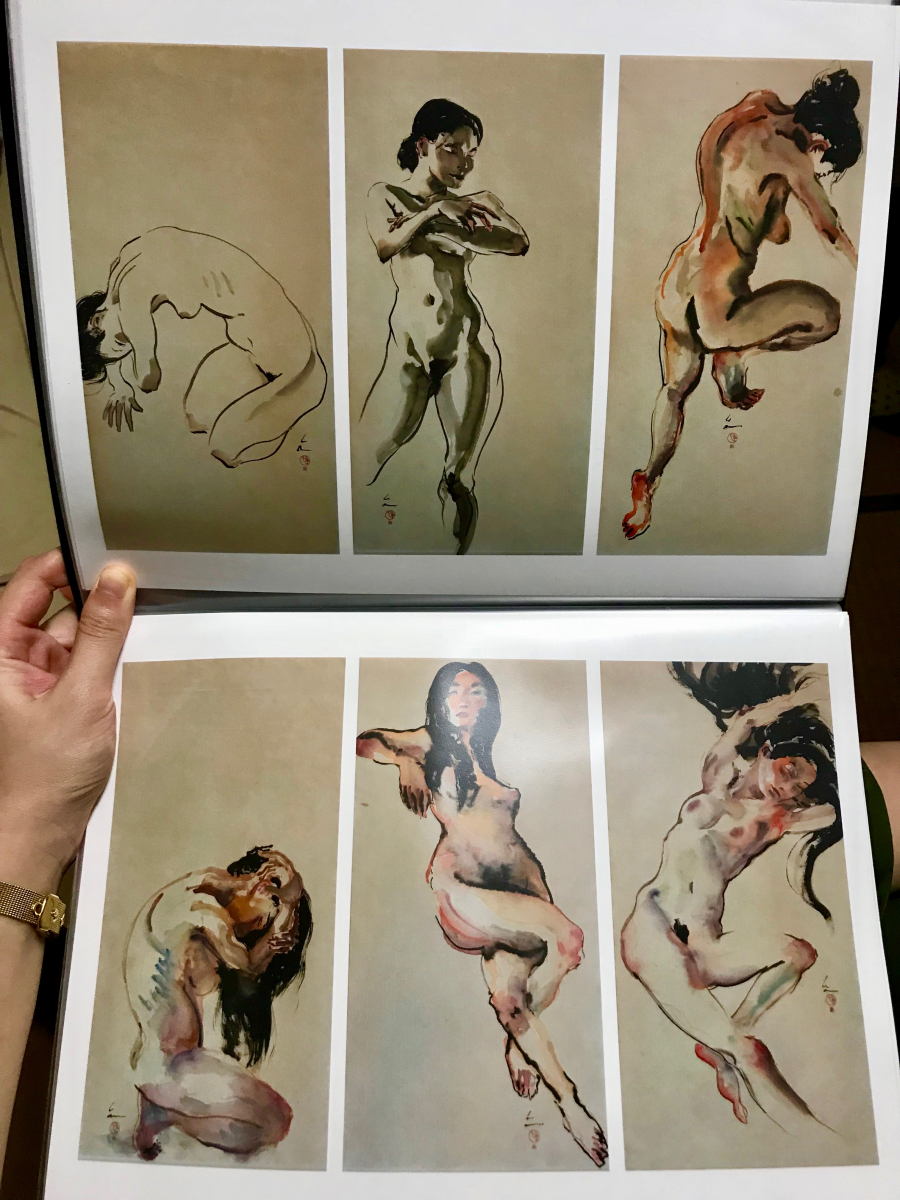
Some of Cole's work
So, I can somehow feel the Zen atmosphere from simple daily activities, like sipping a cup of green tea in a quiet space, and contemplating ink paintings with friends.
Monshuin Zen Monastery, quiet and peaceful
On the short walk from my friend's house to Monshuin Zen Monastery, I breathed in the fresh air and witnessed the peaceful life of the Japanese countryside. The countryside is compared to big cities like Tokyo, but their spacious houses, good roads and neatly tended farms are not at all like the rustic features of the Vietnamese countryside. We also met a neighbor tending his fields and he greeted us very warmly.
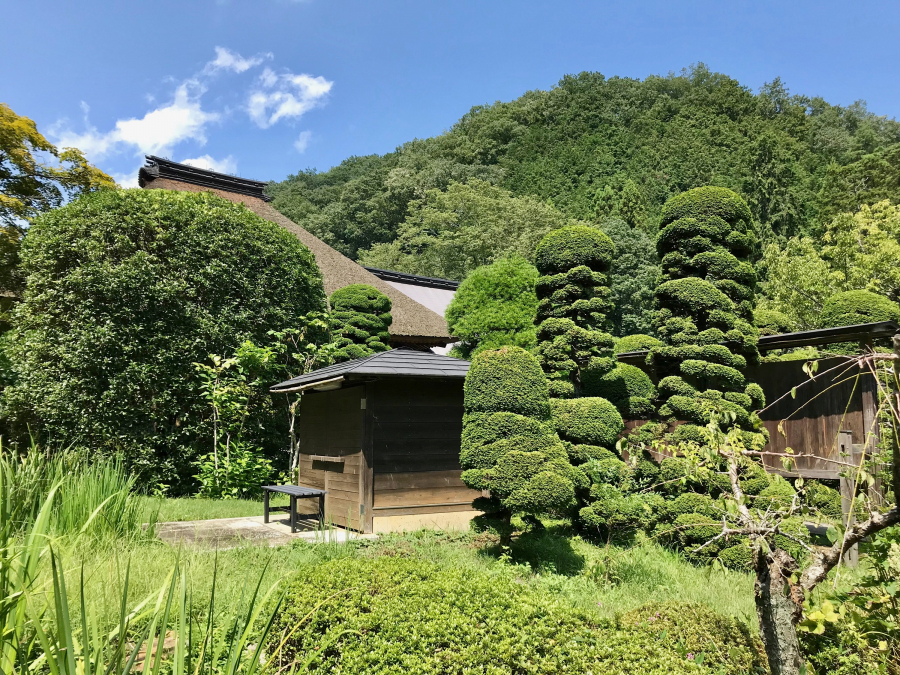
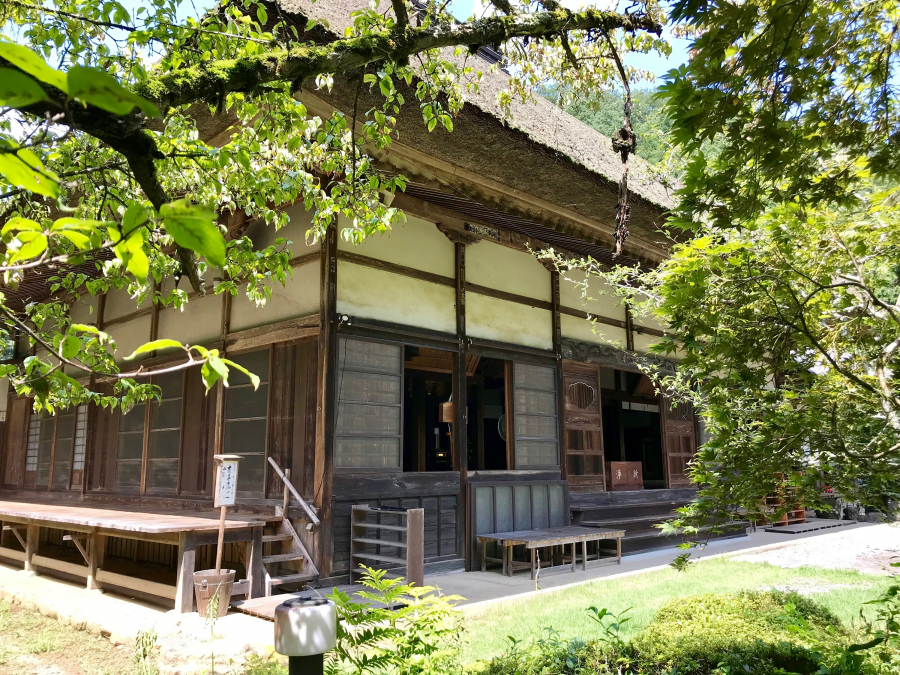
As soon as I stepped into the grounds of Monshuin Zen Monastery, I was immediately overwhelmed by the beautiful scene that seemed to belong to another world. The neatly trimmed trees, the lush green lawns and the miniature landscapes with gently flowing water immediately made me feel strangely peaceful. My favorite was the Koi pond hidden behind the Zen Monastery. The sunlight shone into the pond and reflected back onto the shimmering, magical foliage. It seemed that all the worries and tensions in life would disappear, as we just needed to blend in with this beautiful natural space.
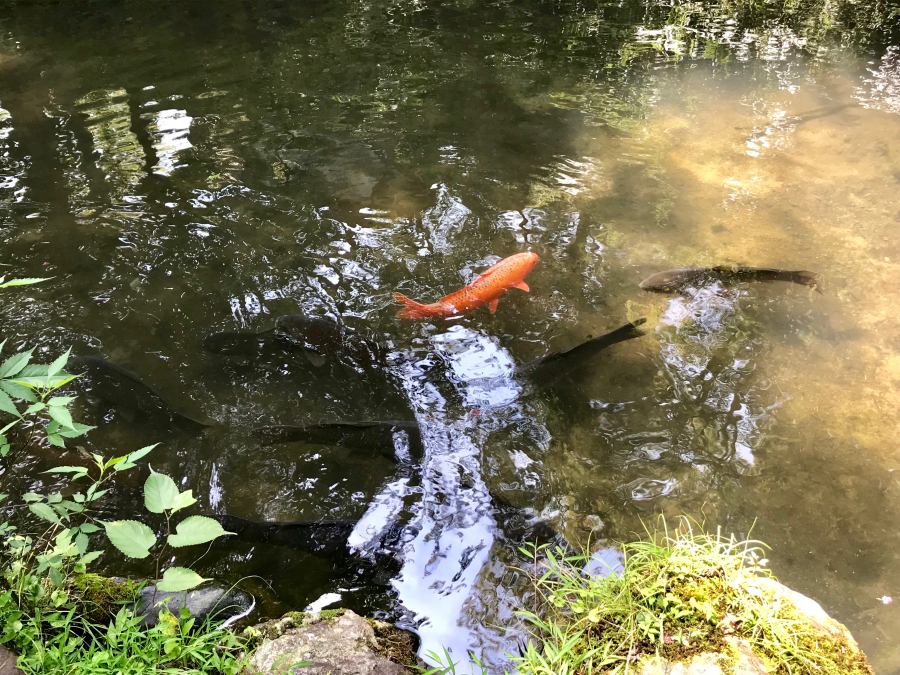
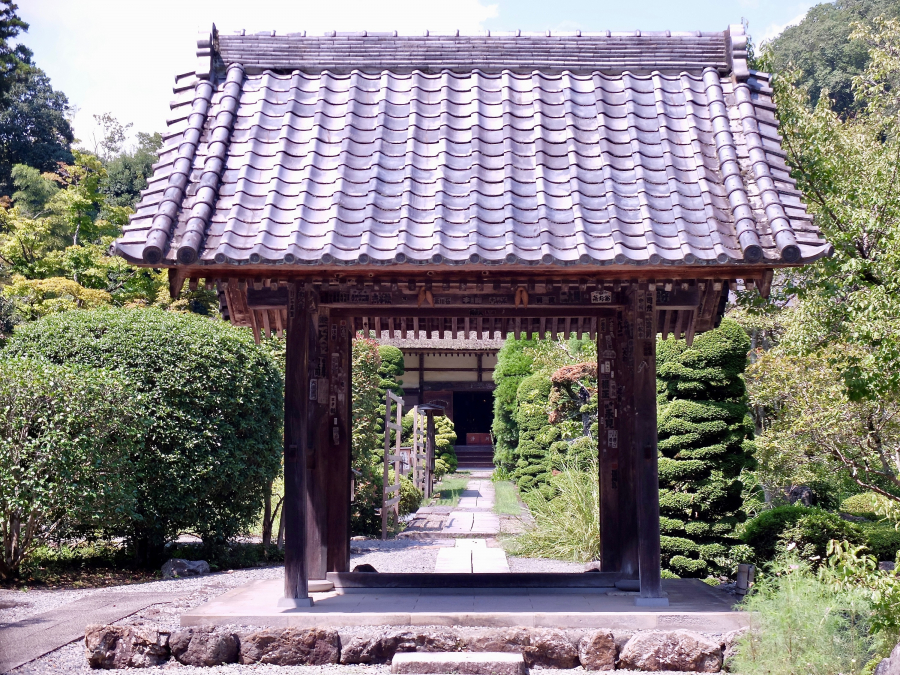
The architecture inside the Zen Monastery is exquisitely beautiful, the open space close to nature makes us feel like we are still outdoors. Inside hangs a beautiful painting by Cole of a jade-green bird, which really suits the serenity and elegance of the Zen Monastery. Mr. Masaya Tanaka, the abbot of the Zen Monastery, is amiable. He invited me to eat cake, drink tea, and talk to me in English. Despite his old age, he still studies English very hard and knows how to play the guitar. His cheerful optimism makes everyone who meets him feel comfortable. He is also a master of calligraphy, so Aki and Cole often come to him for guidance. Monshuin Zen Monastery continues to exist today thanks to his care.
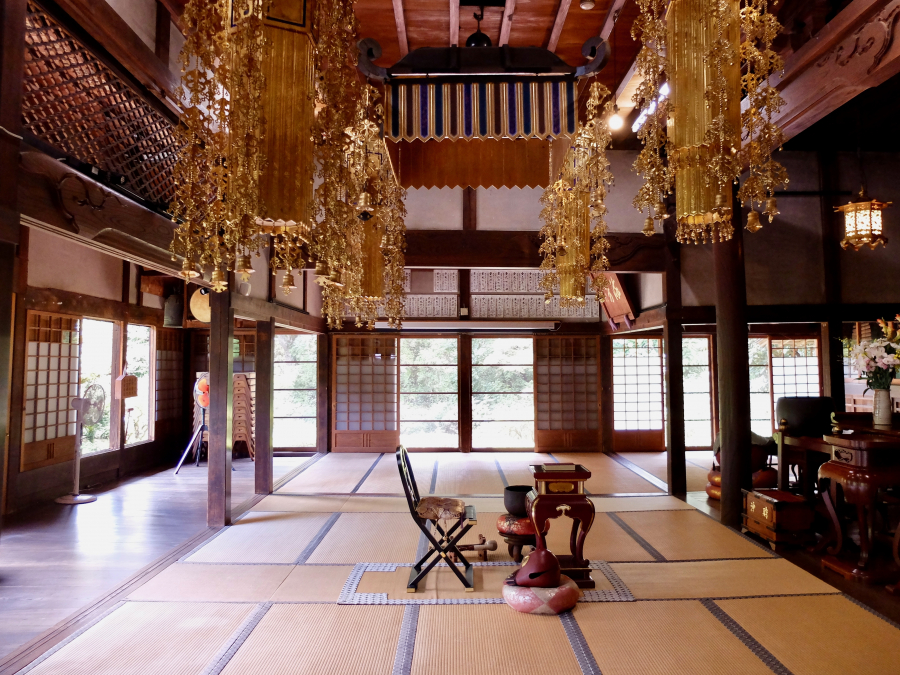
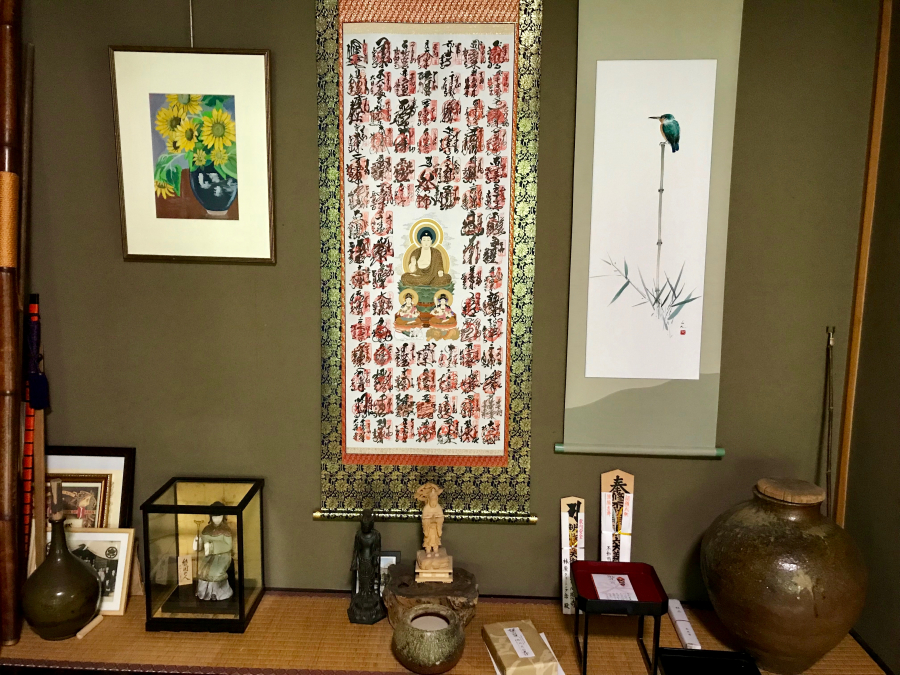
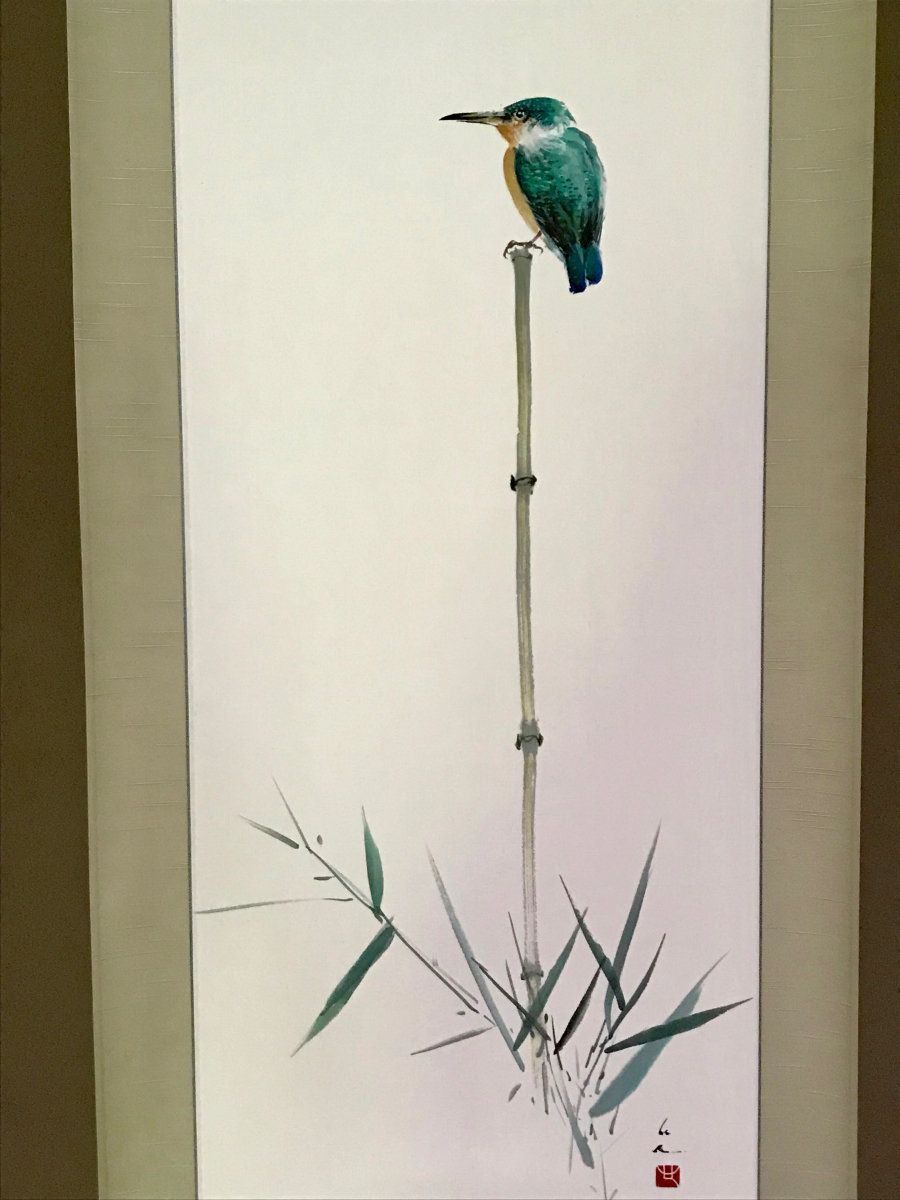
Cole's painting hangs in the Zen Monastery.
Peaceful place on Mount Mitake
On my last day in Ome, I decided to go sightseeing on Mt. Mitake. It only takes about 16 minutes to get from Ome Station to Mitake Station by train. Before taking the cable car to Mitake, Aki took me to visit Mitake Valley, where the Tama River flows through. The beautiful scenery here looks like a watercolor painting. Aki told me that the beautiful nature here is a source of inspiration for many artists.

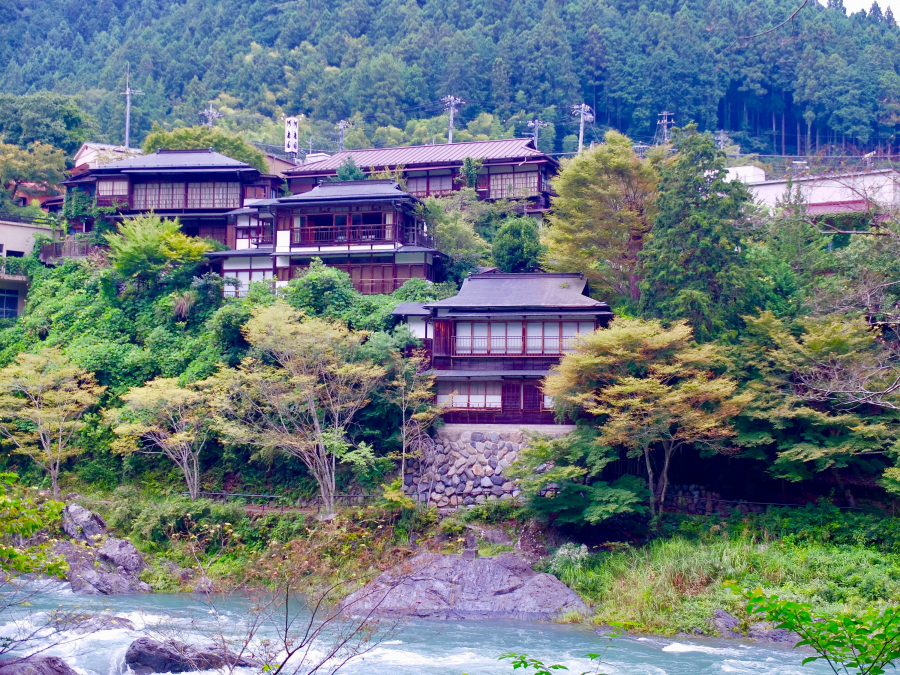
After that, I took the bus to the cable car station and went up the mountain alone. From the cable car down, I still had to walk about 30 minutes to reach the top of the mountain at an altitude of 929 m. On the way up the mountain, I saw a very strange purple-white flower, which looked a bit like a miniature lotus, and there was even a poster advertising this flower. It turns out that September is the season of flowers.renge shoma, the famous flower of Mount Mitake.
The 2,000-year-old Musashi Mitake Shrine on the mountaintop is a wolf shrine because it is said that around the year 150, the spirit of O-Inu-Sama transformed into a white wolf to save Prince Yamata Takeru from evil spirits. The shrine complex is very beautiful with many exquisite details, it feels like the setting of a Studio Ghibli movie. I went on a weekday so it was quite empty, I was the only one there so I felt the sacredness of this place even more clearly. That feeling of peace mixed with a bit of mystery is so precious! For me, Zen is simply moments of peace without worries and knowing how to enjoy every moment to the fullest. When I was on top of Mount Mitake, I completely felt what Zen is.
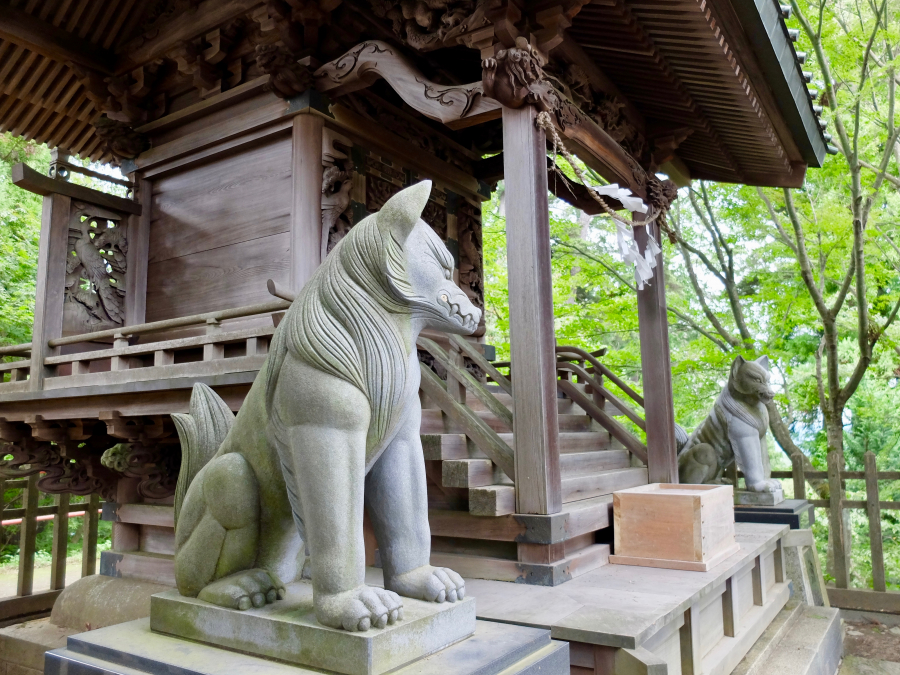
Other memorable experiences in Ome
Ome is a truly nostalgic city. I still vividly remember the meticulously hand-drawn movie posters, and I could feel the love of the person who drew them. It was probably the first time I had ever seen a hand-drawn movie poster from the 1950s. There are about 100 such large posters in the old town of Ome. Or the traditional inn Seiryu Kibako near Ome Station, the vintage-style interior creates a cozy and nostalgic atmosphere.

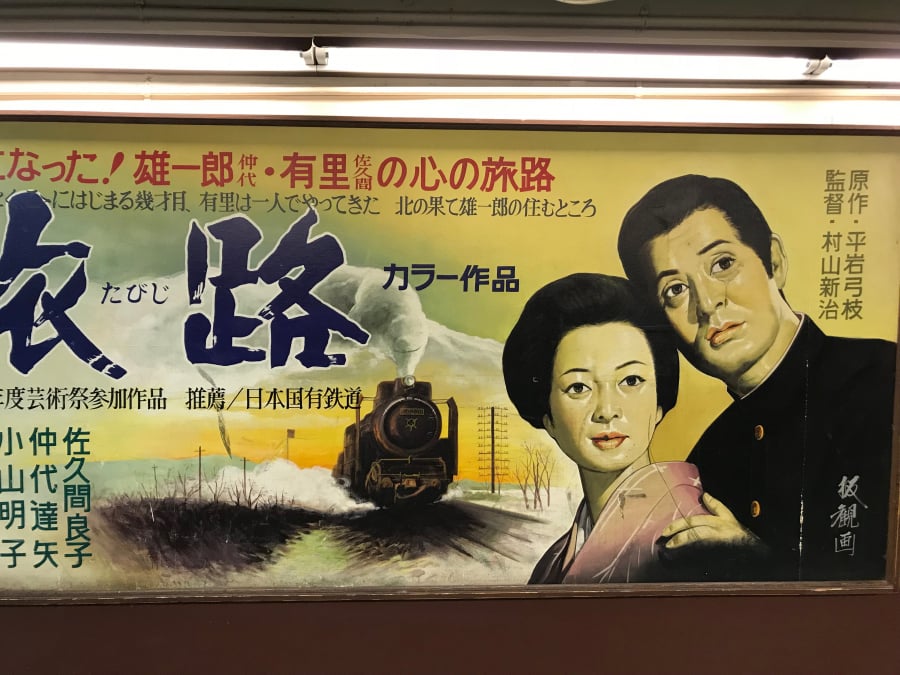
The small community in Ome is very friendly. Aki and Cole are actively involved in community activities, even offering English and drawing classes. Thanks to their good relationship, I also got to interact with many local people in Ome, including dancer Keiko Iida and her daughter Noriko Harashima. They are both masters of tea ceremony, ikebana flower arrangement and traditional kimono. They let me try on a furisode and designed a unique and elaborate bow-shaped obi knot for me. Noriko also excitedly told me about the history of kimono and said that the back of the kimono is open because, according to Japanese beliefs, the back of a woman's neck is the most beautiful part.

Authors have the opportunity to present their research
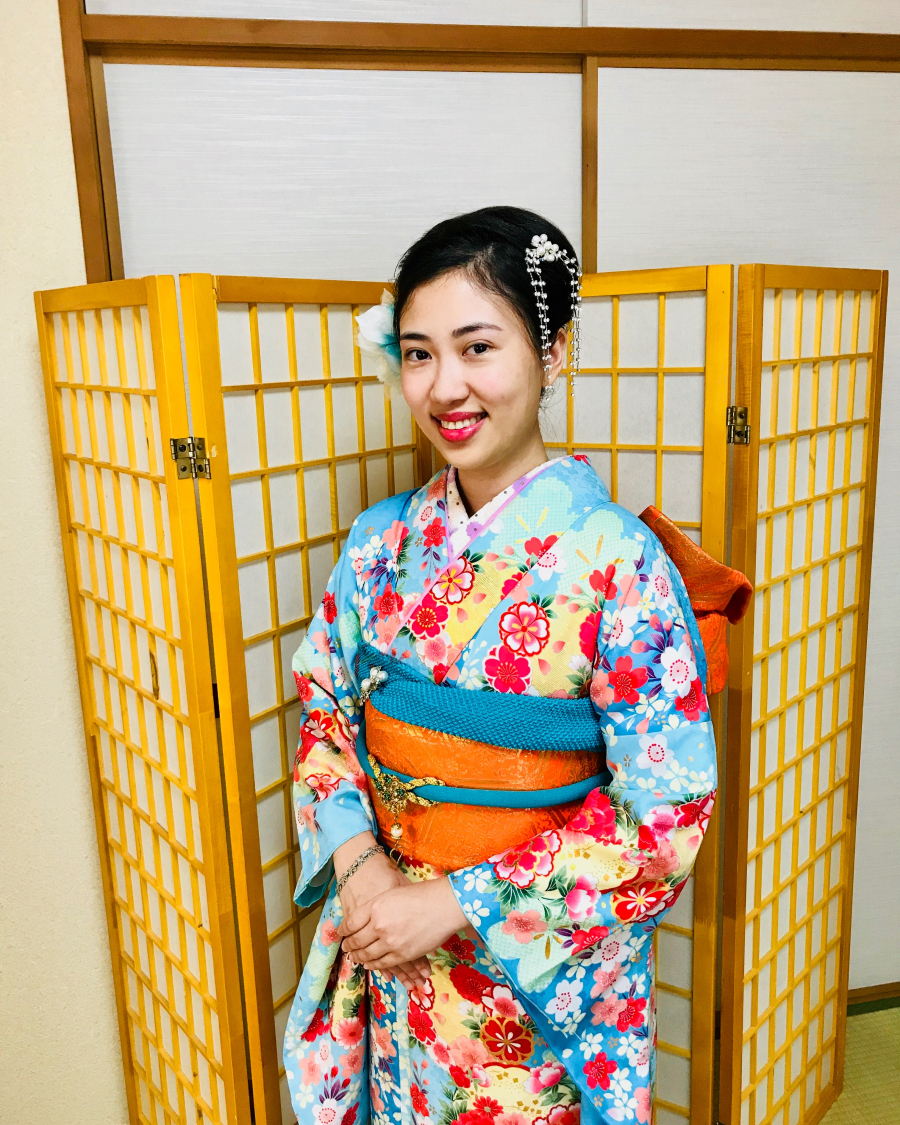
The author in traditional furisode costume.
Although the people of Ome live in a city that seems quite isolated from the world, they are actually very willing to welcome foreign visitors and want to learn about other cultures. Knowing that my major is Art History, they invited me to introduce my graduation thesis as well as about Vietnamese art. Thanks to them, I had unique experiences in Ome and a good impression of Japan.
MORE INFORMATION
Artist Cole Norton
- Cole Norton was born in 1985 in Milwaukee, Wisconsin. His style combines Western Impressionism with Chinese and Japanese ink painting. He is a student of the Chinese ink painter Hakuro and currently lives in Tokyo. Cole focuses on drawing the human body and teaches it at the Milwaukee Institute of Art and Design.
- Artist Cole Norton's website:http://colenortonart.com
Zen
- Zen in Japanese means "Dhyana", is a sect of Mahayana Buddhism in Japan, promoting the value of Enlightenment through meditation and intuition rather than through reading Buddhist scriptures.
- Zen in Vietnamese means “Thien Tong”. In Zen, Cao Dong is the largest sect. Followers of this religion want to learn how to enjoy every moment to the fullest by meditating, not directly seeking Enlightenment.
- Zen in English also refers to a state of relaxation and peace of mind even when there is an incident.
Monshuin Zen Monastery
- The full English name of the temple is “Mt. Kurosawa Sōtō Zen Monshuin Temple”, founded around 1532 and following the Soto sect. After two major fires, the temple was completely burned down and rebuilt in 1850.
Some terms about kimono
- Furisode is a long-sleeved kimono worn by unmarried women on formal occasions. The two most common types of furisode are ofurisode and chufurisode.
- Ofurisode: long-sleeved kimono worn for weddings or important ceremonies.
- Chufurisode: a short-sleeved kimono usually worn during the coming-of-age ceremony when young women turn 20 years old. The process of putting on a furisode is very elaborate, requiring 2 people to do it for 30-40 minutes.
- Obi: sash.
- Musubi: obi knot.





